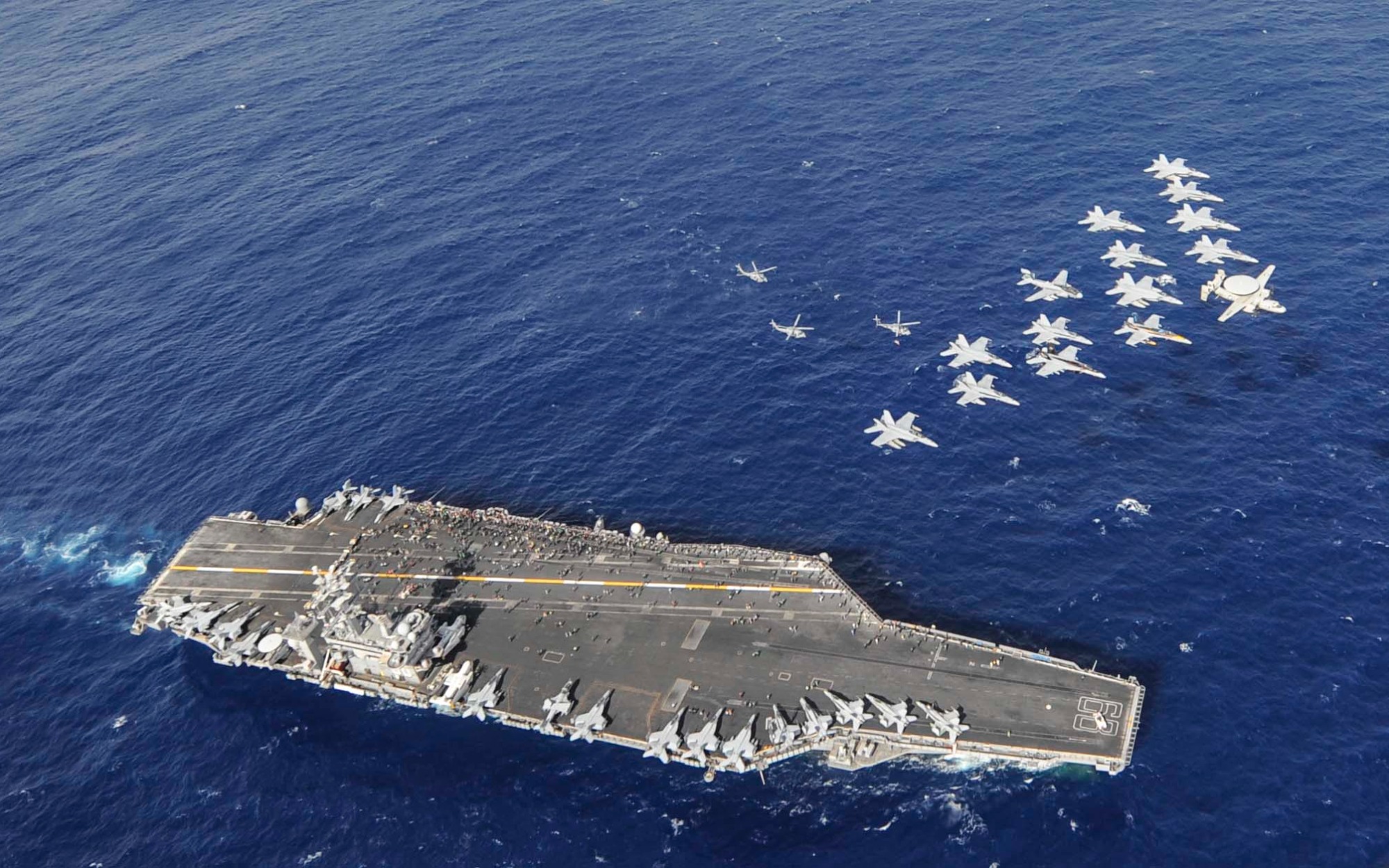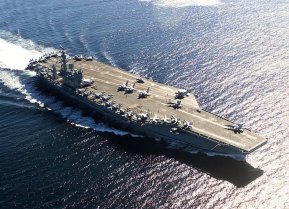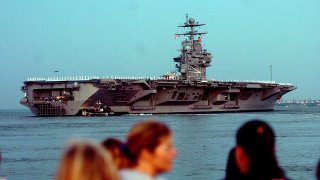Nimitz-Class Aircraft Carrier: The Backbone of U.S. Navy Power
In all, the Nimitz-class is a shining example of military ingenuity and a staple of the US Naval force structure. And while the Nimitz’s replacement is beginning to enter service, the Nimitz should be around for another few decades.
Perhaps the most recognizable name in aircraft carriers is the Nimitz. Named for the famed Pacific Fleet commander of World War II, the Nimitz-class aircraft carrier has been in perpetual service since 1975, and at the time of its introduction, was the largest warship ever built.
And while the Nimitz’s replacement, the Ford-class is now joining the fleet, the Navy is conducting studies to determine whether the Nimitz’s service life can be extended decades – so safe money says the Nimitz will be sticking around awhile longer.
The significance of the aircraft carrier
The aircraft carrier is amongst the most symbolic and significant of all war machines.
High-end aircraft carriers are, after all, floating cities capable of projecting a nation’s air power anywhere on the globe.
Carriers are technological marvels, massive industrial undertakings that only the world’s wealthiest nations can pull off.
Only eleven of the world’s nations have aircraft carriers of any kind, and only two (France and the United States) have nuclear-powered carriers.
Most of the world’s aircraft carriers are relatively Podunk. Indeed, aircraft carrier production corresponds closely with a nation’s overall wealth
. The United States, for example, has by far the largest carrier fleet (with 11). China has three. India, the UK, Italy, and Japan have two. Russia, France, Spain, Turkey, Brazil, and Thailand have one. And that’s it.
Without question, the United States leads the way concerning aircraft carrier design, development, and deployment. When people think of US aircraft carriers, the Nimitz-class comes to mind.
The Nimitz-Class enters service
The first Nimitz was built in the late 60s, entering service in 1975. Designed to supplement the Kitty Hawk and Enterprise classes of carrier, the Nimitz was arranged similarly to the Kitty Hawk – albeit an improved version. Specifically, the Nimitz was built around two nuclear reactors (rather than the eight used on the Enterprise), which allowed for the Nimitz to carry significantly more aviation fuel and ordnance than preceding carrier classes.
Incorporating the lessons learned during World War II, the Nimitz was built to sustain three times the damage of an Essex-class carrier (which were repeatedly targeted with Japanese kamikaze attacks). To restrict the spread of fire, the Nimitz was built with hangars that are divided into three fire bays with thick steel doors. But while the Nimitz incorporated lessons from World War II, the carrier wasn’t built to serve in a World War II style conflict; rather, the Nimitz was built with the Cold War and the Vietnam War in mind.
The needs of the Vietnam War, the need to launch sortie after sortie, is what inspired the Nimitz designers to create a vessel of carrying so much more aviation fuel and ordnance than preceding carriers. Operations in Vietnam depended upon volume.

To meet the demands of the Cold War, the Nimitz was designed around nuclear power (which allowed the vessel to remain at sea indefinitely) and the ability to interchange different weapons systems as the ever-evolving circumstances of the Cold War dictated.
The Specifications
While the Ford-class is the new title-bearer, the Nimitz was once the largest ship ever built. Consider the Nimitz’s massive specs: 1.092 feet long with a 252 foot beam; up to 106,300 tons of displacement with a full load; 3.532 sailors and an air wing of 2,480 for an overall crew of up to 5,200 people; 130 aircraft on board. The Nimitz is a behemoth.
To propel such a massive vessel, the Nimitz relies upon two A4W nuclear reactors housed in separate compartments. The reactors generate heat through nuclear fission, which heats water, which produces steam.
The steam is then used to drive four turbines and four propellor shafts, engaging four bronze propellors that are each 25 feet in diameter and weigh 66,000 pounds. The result: a maximum speed over 30 knots and maximum power over 260,000 horses. To steer the Nimitz whwile she is underway are two 29 foot high, 22 feet long rudders – each weighing 50 metric tons.
Nimitz-Class Weapons
The main feature of an aircraft carrier, the reason the aircraft exists in the first place, is the aircraft. And the Nimitz is exemplary with respect to its ability to ferry aircraft. In fact, the Nimitz can handle up to 130 F/A-18 Hornets at once. Alternatively, the Nimitz can accommodate 85-90 mixed aircraft at once. Typically, a Nimitz air wing includes 24-36 F/A-18 Hornets; 4-6 EA-18 Growlers; 4-6 E-2 Hawkeyes; and a few C-2 Greyhounds, MV-22 Ospreys, and SH-60 Seahawks.

In all, the Nimitz-class is a shining example of military ingenuity and a staple of the US Naval force structure. And while the Nimitz’s replacement is beginning to enter service, the Nimitz should be around for another few decades.
Harrison Kass is a prolific defense writer with over 1000 defense pieces published in various outlets. An attorney, pilot, guitarist, and minor pro hockey player, Harrison joined the US Air Force as a Pilot Trainee but was medically discharged. Harrison holds a BA from Lake Forest College, a JD from the University of Oregon, and an MA from New York University. Harrison listens to Dokken.
Image Credit: Creative Commons.


